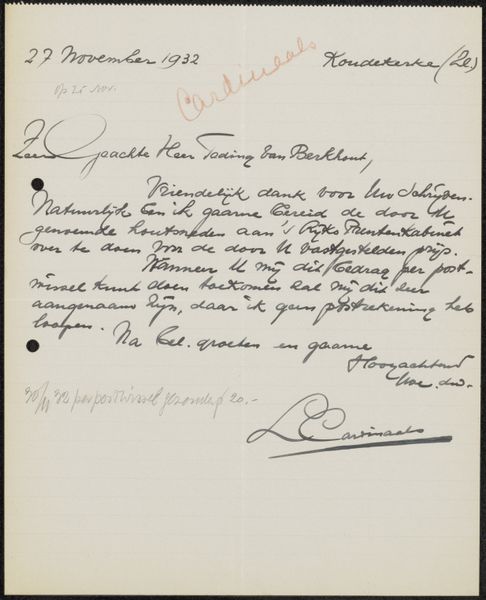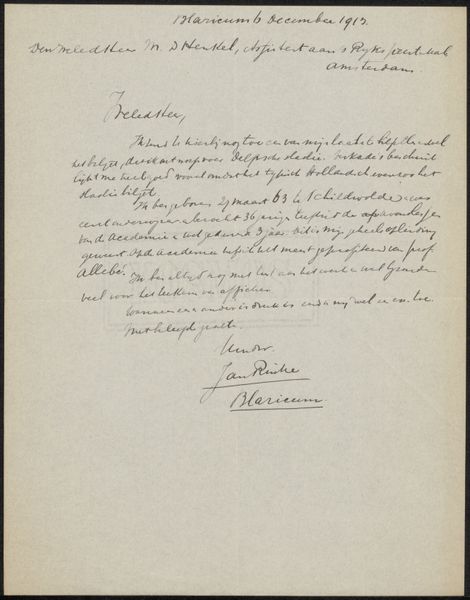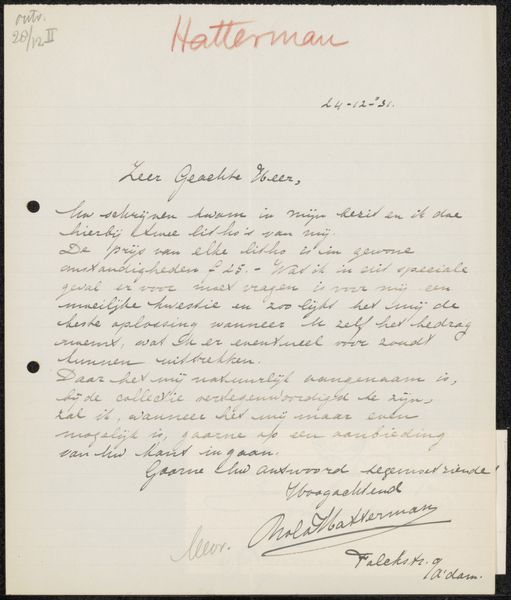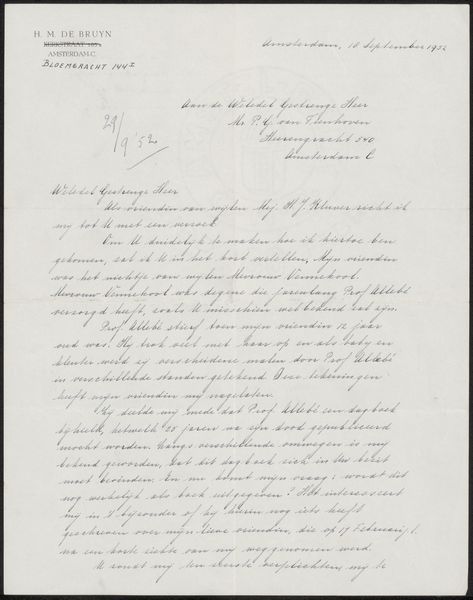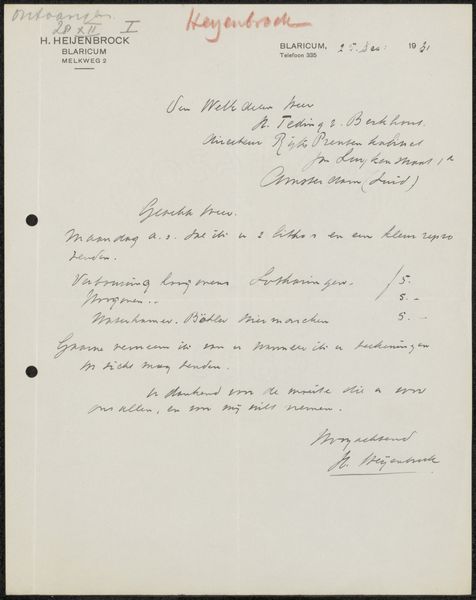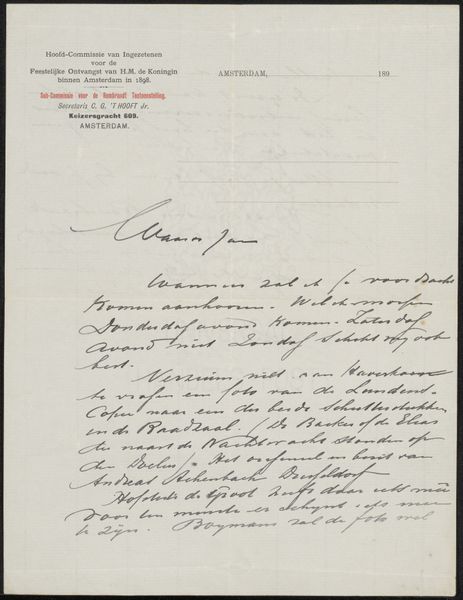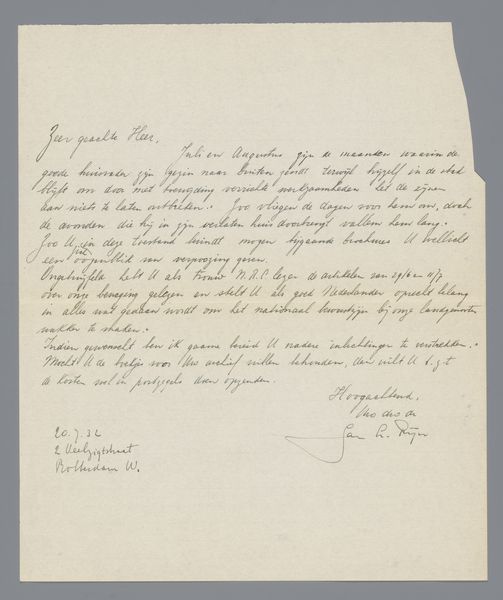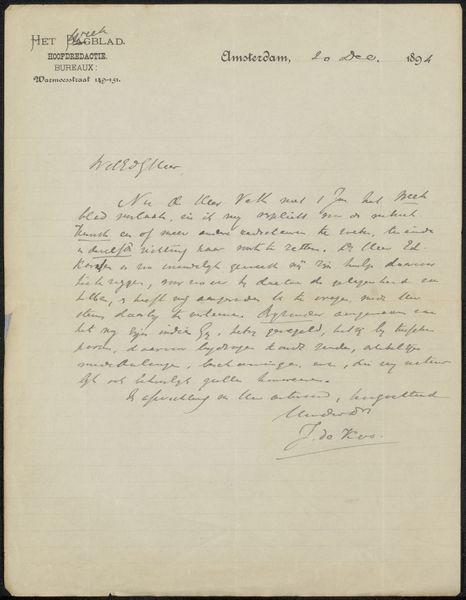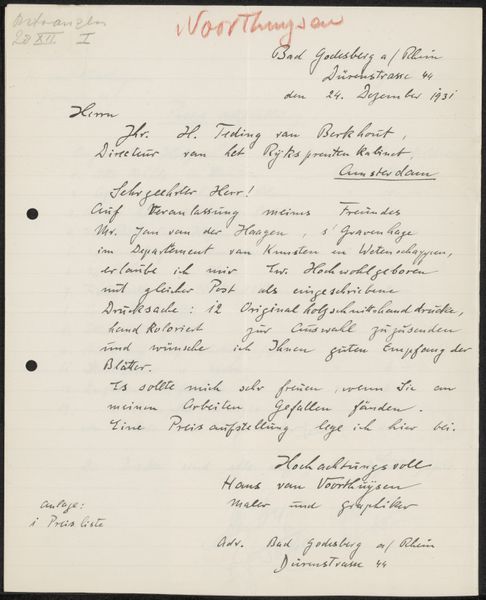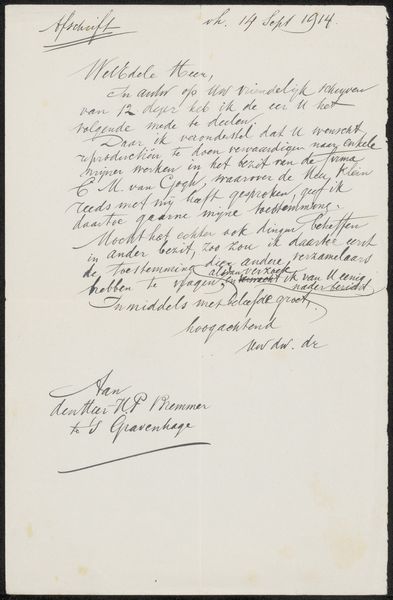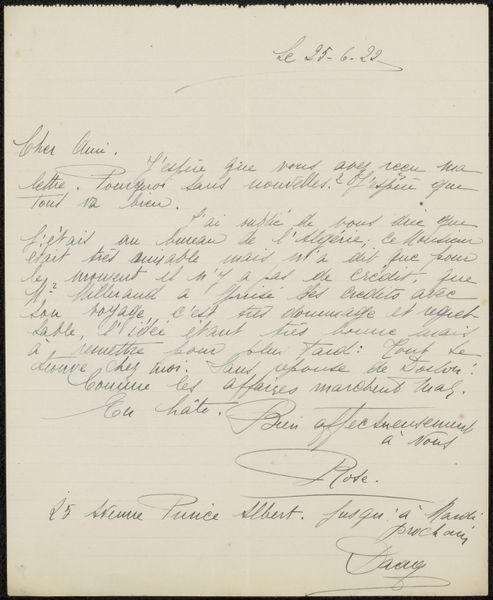
drawing, mixed-media, paper, ink, pen
#
drawing
#
mixed-media
#
hand-lettering
#
old engraving style
#
hand drawn type
#
hand lettering
#
paper
#
personal sketchbook
#
ink
#
hand-drawn typeface
#
pen-ink sketch
#
pen work
#
sketchbook drawing
#
pen
#
sketchbook art
#
calligraphy
Copyright: Rijks Museum: Open Domain
This letter, penned by L. Rançon in Paris on June 11, 1929, carries more than just ink; it bears the weight of memory. The formal script and business-like letterhead, symbols of commerce and correspondence, overlay a deeply human narrative. Consider the act of writing itself, a motif echoing through history, from ancient scribes to modern novelists. Writing preserves, conveys, and connects, just like the images we study. Here, Rançon details a transaction, yet embedded within is a lament: the mention of Monsieur Zilcken's brother, killed in Paris in 1915, subtly introduces loss into the record. The inclusion of this personal tragedy—an indirect reference to the devastation of war—is a poignant reminder of collective trauma. It's akin to a "Pathosformel," a gesture carrying intense emotional charge. This letter transforms from a mere business note into a vessel of remembrance, illustrating how personal and collective memory intertwine, surfacing unexpectedly in the most mundane contexts. The act of remembering, of marking loss, echoes through time, an eternal return of human experience.
Comments
No comments
Be the first to comment and join the conversation on the ultimate creative platform.
